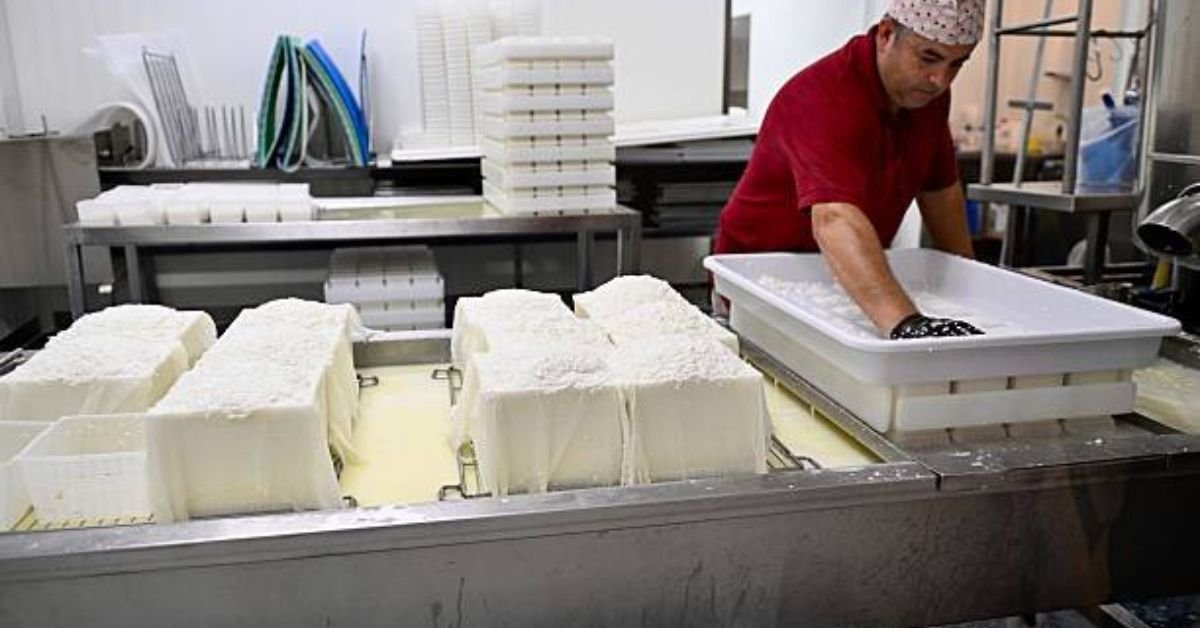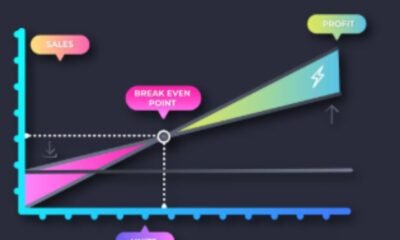BLOG
The Power Behind Patterns: Understanding Growth Factor in Math

Introduction: The Mathematical Engine Behind Exponential Change
In mathematics, the growth factor is a pivotal concept used to describe how quantities increase over time, particularly within exponential functions. While often introduced early in algebra, this idea reaches far beyond the classroom—it underpins everything from financial modeling and population growth to the spread of viruses and technological adoption. Understanding how values evolve through consistent multiplication can help demystify complex real-world behaviors and data trends, revealing powerful patterns hidden beneath the surface.

The Foundations of Exponential Growth
At its core, exponential growth involves repeated multiplication over equal time intervals. Unlike linear growth—which adds a fixed amount each step—exponential models use a consistent multiplier. This multiplier is the common ratio, also known as the growth multiplier or base, and it’s what determines the speed of increase.
When the growth multiplier is greater than one, we observe rapid escalation. If the value lies between zero and one, we experience exponential decay instead. This mathematical distinction is crucial in modeling diverse systems, from compound interest in savings accounts to radioactive decay in physics.
Growth Factor vs. Growth Rate: A Crucial Clarification
It’s common to confuse the growth factor with the growth rate, but they’re not quite the same. The growth factor is the number you multiply by in each step (like 1.25), while the growth rate refers to the percentage increase or decrease (like 25%). For instance, a 25% growth rate corresponds to a growth factor of 1.25, and a 10% decrease would relate to a factor of 0.90. These terms are closely linked in exponential equations but have different interpretations in mathematical modeling.
Real-World Applications of Growth Factor
The importance of this concept becomes clear when you start applying it outside theoretical exercises:
- Population growth: Nations and ecosystems often follow exponential population curves, where growth factor helps estimate future population sizes using current trends.
- Finance and economics: Understanding growth factor is key in compound interest calculations, investment growth, and economic forecasting.
- Science and health: In epidemiology, scientists use it to model virus transmission, while in biology, it helps describe cell division patterns.
- Technology adoption: From smartphones to social media, user growth often mirrors exponential trends shaped by digital virality.
Each of these fields relies on mathematical modeling to forecast change, and the growth factor plays a central role in shaping those projections.
Visualizing Growth: Graphing Exponential Functions
To truly grasp exponential behavior, visual tools like graphs are invaluable. On a Cartesian plane, exponential growth curves start slowly and then skyrocket, creating a sharp upward arc. The x-axis typically represents time, while the y-axis shows the quantity being measured.
The equation most often used is:
y=a⋅bxy = a \cdot b^xy=a⋅bx
Here, a is the initial value, b is the growth factor, and x represents time intervals or steps. When graphed, this curve becomes increasingly steep, illustrating the accelerating pace of exponential functions as opposed to the straight line of linear equations.

Identifying Patterns in Exponential Sequences
One of the easiest ways to spot exponential growth is through geometric sequences. In these series, each term is derived by multiplying the previous one by a fixed value. For example, 2, 4, 8, 16… clearly follows a doubling pattern, where the growth factor is 2.
Recognizing this pattern in data allows students, researchers, and analysts to infer future behavior, validate assumptions, and even identify when something isn’t growing exponentially—an essential part of statistical analysis.
Growth Factor in the Classroom and Beyond
For students, especially in middle and high school, learning how to calculate and apply the growth factor is a stepping stone into deeper mathematical thinking. Beyond solving textbook problems, it prepares them to tackle word problems, interpret real-world data, and make predictions based on observable trends.
Educators often use relatable examples—like a virus doubling every day or savings increasing monthly—to teach the significance of this concept. By exploring real-life scenarios, students are able to develop stronger algebraic reasoning and learn to work with exponential equations in both symbolic and applied contexts.
Growth vs. Decay: Two Sides of the Same Coin
Just as exponential growth uses a factor greater than 1, exponential decay involves growth factors less than 1 but greater than 0. Instead of increasing, quantities shrink over time—common in areas like depreciation, radioactive decay, or cooling temperatures.
The math remains structurally similar:
y=a⋅bxwhere0<b<1y = a \cdot b^x \quad \text{where} \quad 0 < b < 1y=a⋅bxwhere0<b<1
Understanding the difference between a growth factor and a decay factor helps students interpret various kinds of exponential changes and their implications across different domains.
Common Mistakes and Misconceptions
Despite its widespread use, people often misapply or misunderstand the growth factor concept. Here are a few common issues:
- Confusing growth rate with growth factor: This leads to incorrect calculations, especially when transitioning from percentages to decimal multipliers.
- Misreading exponential graphs: New learners might expect immediate acceleration, not realizing that exponential functions often start slowly before ramping up dramatically.
- Forgetting compounding intervals: In compound interest and similar applications, the frequency of compounding can drastically affect outcomes, even with the same annual growth factor.
By carefully distinguishing these elements, learners can avoid errors and apply the concept more effectively.
Frequently Asked Questions (FAQs)
1. What is a growth factor in math?
A growth factor in math is the consistent number by which a quantity is multiplied at each step of an exponential function. It determines whether the quantity grows or decays over time.
2. How do you calculate the growth factor?
You calculate it by dividing a later value by a previous value in a sequence:
Growth Factor=New ValueOld Value\text{Growth Factor} = \frac{\text{New Value}}{\text{Old Value}}Growth Factor=Old ValueNew Value
In cases of percentage growth, add 1 to the decimal form of the percentage. For example, a 5% increase has a growth factor of 1.05.
3. Can the growth factor be less than 1?
Yes, when the growth factor is between 0 and 1, the process represents exponential decay rather than growth.
4. What’s the difference between growth factor and decay factor?
Both are types of exponential factors. A growth factor is greater than 1 and results in increasing quantities. A decay factor is less than 1 and leads to decreasing quantities over time.
5. How is growth factor used in real-world problems?
Growth factor is used in modeling population trends, calculating compound interest, predicting technological adoption, and simulating disease spread, among many other practical applications.
Conclusion: Recognizing the Power Behind Mathematical Growth
Understanding the growth factor equips learners, analysts, and professionals with the tools to interpret, model, and predict dynamic changes in the world around them. From school lessons to global economic forecasts, this concept unlocks the patterns that shape reality. Whether you’re analyzing population growth, forecasting returns on financial
BLOG
Besos Meaning: A Journey into the Heart of Latin American Culture

Besos is derived from the Spanish language, where it translates to “kisses.” However, the meaning of besos goes beyond a simple translation. It’s a term that encompasses a range of emotions, from affection and love to passion and intimacy.
The Cultural Significance of Besos
In many Latin American cultures, besos are an integral part of daily life. They’re a way to show affection, greet one another, and express love. The cultural significance of besos is deeply rooted in the values of warmth, hospitality, and closeness.

The Different Types of Besos
While the term “besos” is often associated with romantic love, it’s not the only context in which it’s used. Besos can be exchanged between family members, friends, and even as a greeting or farewell.
- A beso on the cheek is a common greeting in many Latin American countries.
- A beso on the lips is often reserved for romantic partners or loved ones.
- A beso on the forehead or hand can be a sign of respect, affection, or blessing.
“I remember my abuela giving me besos on the forehead every night before bed. It was a special moment that made me feel loved and safe.”
The Emotional Significance of Besos
Besos are more than just a physical gesture; they’re a way to convey emotions and connect with others. The act of giving or receiving a beso can evoke feelings of comfort, security, and love.
FAQs
Q: What is the meaning of besos in Spanish?
A: Besos is the Spanish word for “kisses.” It’s a term used to describe a range of affectionate gestures, from romantic kisses to friendly pecks on the cheek.
Q: How do you use besos in a sentence?
A: You can use besos in a sentence to express affection or love, such as “Dale besos a tu familia de mi parte” (Give your family a kiss from me).
Q: What is the cultural significance of besos in Latin America?
A: Besos play a significant role in Latin American culture, where they’re used to show affection, greet one another, and express love.
Q: Can besos be used in non-romantic contexts?
A: Yes, besos can be used in non-romantic contexts, such as between family members or friends. It’s a way to show affection and closeness.
Conclusion
Besos, we discover that it’s more than just a word – it’s a way to connect with others and express our emotions. Whether you’re looking to deepen your understanding of Latin American culture or simply want to show affection to those around you, besos is a term that’s worth exploring further.
BLOG
Luxury Cruise Passengers: Staying Safe on the High Seas

Luxury cruises often traverse through exotic waters, some of which are notorious for piracy. The Gulf of Aden, the Indian Ocean, and parts of Southeast Asia are known hotspots where pirates have been active. These areas are often near popular cruise routes, putting luxury cruise passengers at risk.
Piracy Tactics: How Pirates Target Luxury Cruises
Pirates have become increasingly sophisticated, using tactics like GPS spoofing and fake ship identities to target unsuspecting vessels. They often look for easy prey, such as slow-moving ships or those with lax security. Luxury cruises, with their high-value passengers and cargo, can be attractive targets.
The Human Impact: Stories from Luxury Cruise Passengers
“I was on a luxury cruise in the Gulf of Aden when we received a piracy warning. The crew immediately took action, increasing security measures and altering our course. It was a harrowing experience, but thanks to their quick response, we were safe.” The fear and uncertainty that come with a piracy warning can be unsettling, but being prepared and knowing what to expect can make all the difference.
Staying Safe: Precautions and Measures for Luxury Cruise Passengers
To minimize the risk of piracy, luxury cruise lines have implemented various security measures. These include:
- Traveling in convoys or with naval escorts
- Implementing advanced security systems, such as radar and surveillance cameras
- Conducting regular security drills and training for crew members
- Increasing security personnel on board

What Luxury Cruise Passengers Can Do
While cruise lines take necessary precautions, passengers can also play a role in staying safe. Being aware of the risks and taking simple precautions, such as staying informed about piracy hotspots and following crew instructions, can help minimize the risk of piracy.
Piracy Warning Systems: How Luxury Cruises Stay Ahead
Luxury cruise lines use advanced piracy warning systems to stay informed about potential threats. These systems provide real-time updates on piracy hotspots and suspicious activity, enabling crews to take proactive measures to avoid danger.
The Role of Technology in Piracy Prevention
Technology plays a vital role in preventing piracy. Advanced systems, such as satellite tracking and AI-powered surveillance, help cruise lines stay one step ahead of pirates. These technologies enable crews to respond quickly and effectively in the event of a piracy warning.
FAQs
Q: What should I do if I receive a piracy warning on my luxury cruise?
A: If you receive a piracy warning, follow the instructions of your crew immediately. They are trained to handle such situations and will take necessary precautions to ensure your safety.
Q: Are luxury cruises more vulnerable to piracy than other types of cruises?
A: Luxury cruises can be attractive targets for pirates due to their high-value passengers and cargo. However, luxury cruise lines often have advanced security measures in place to minimize the risk.
Q: How can I stay informed about piracy hotspots and safety measures on my luxury cruise?
A: Your cruise line will provide you with information about piracy hotspots and safety measures in place. You can also stay informed through government travel advisories and industry reports.
Q: Can I travel safely on a luxury cruise despite the risk of piracy?
A: Yes, with the right precautions and awareness, you can travel safely on a luxury cruise. Cruise lines take piracy seriously and have measures in place to protect passengers.
Conclusion
Luxury cruise, staying informed about piracy risks and taking necessary precautions can help ensure a safe and enjoyable journey. By understanding the risks and being aware of the measures in place to prevent piracy, you can relax and enjoy your time on board.
BLOG
Mandarin for Mandarin: Tips and Tricks for Language Learners

Mandarin can be a rewarding and enriching experience, especially when you focus on learning Mandarin for Mandarin. By doing so, you can:
- Improve your pronunciation and intonation
- Develop a deeper understanding of Chinese culture and history
- Enhance your career opportunities in China or with Chinese companies
Immersing Yourself in the Language
One of the most effective ways to learn Mandarin for Mandarin is to immerse yourself in the language. This can be done by:
- Watching Chinese movies and TV shows
- Listening to Chinese music and podcasts
- Speaking with native Mandarin speakers
For example, “I started watching Chinese dramas with English subtitles and it really helped me improve my listening skills and get used to the natural flow of the language.”

Tips for Learning Mandarin for Mandarin
When it comes to learning Mandarin for Mandarin, there are several tips to keep in mind:
- Focus on tones and pronunciation
- Practice speaking and listening regularly
- Use language learning apps and resources
Using Language Learning Apps
There are many language learning apps available that can help you learn Mandarin for Mandarin. Some popular options include:
- Duolingo
- HelloTalk
- Pleco
FAQs
Q: What is the best way to learn Mandarin for Mandarin?
A: The best way to learn Mandarin for Mandarin is to immerse yourself in the language by watching Chinese media, speaking with native speakers, and practicing regularly.
Q: How can I improve my Mandarin pronunciation?
A: You can improve your Mandarin pronunciation by listening to native speakers, practicing speaking regularly, and using language learning apps that focus on pronunciation.
Q: What are some common challenges when learning Mandarin for Mandarin?
A: Some common challenges include mastering tones, understanding grammar and syntax, and finding opportunities to practice speaking and listening.
Q: Can I learn Mandarin for Mandarin on my own?
A: Yes, you can learn Mandarin for Mandarin on your own with the right resources and motivation. However, it’s also helpful to work with a language exchange partner or tutor to get feedback and support.
Conclusion
Mandarin for Mandarin requires dedication, persistence, and the right resources. By immersing yourself in the language, practicing regularly, and using the right language learning tools, you can achieve fluency and unlock new opportunities. Whether you’re a beginner or advanced learner, there’s always room to improve and refine your Mandarin skills.
-

 TECH6 months ago
TECH6 months agoApple iPhone 17: Official 2025 Release Date Revealed
-

 BLOG6 months ago
BLOG6 months agoUnderstanding the ∴ Symbol in Math
-

 EDUCATION6 months ago
EDUCATION6 months agoHorizontal Translation: How to Shift Graphs
-

 EDUCATION6 months ago
EDUCATION6 months agoUsing the Quadratic Formula
-

 EDUCATION6 months ago
EDUCATION6 months agoThe Meaning of an Open Circle in Math Explained
-

 HEALTH6 months ago
HEALTH6 months agoGoodNever: Wellness, Simplified
-

 EDUCATION6 months ago
EDUCATION6 months agoWhy Does m Represent Slope?
-

 EDUCATION6 months ago
EDUCATION6 months agoHow to Solve Quadratic Equations 2
